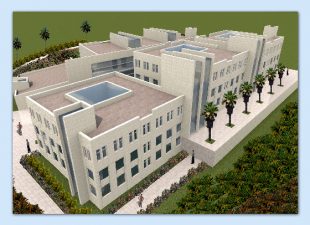 Abu Dhabi plans to best the US with a bigger, greener line of zero-emission buses.
Abu Dhabi plans to best the US with a bigger, greener line of zero-emission buses.
Abu Dhabi never ceases to amaze us with their growing emissions reduction initiatives. A couple of their most recent developments include the sewage-fed forest and solar-powered recycling bins. While the emirate occasionally produces environmental hazards such as the bejeweled Christmas tree, we feature efforts like these new electric buses on a near-daily basis. Of course, electric vehicles are only as green as the fuel used to produce them (which will be oil for the foreseeable future in Abu Dhabi), but at least they will cut emissions.The demand for greener transportation options is growing steadily in Abu Dhabi. As a result, a new joint venture between DesignLine and Liberty Automotive will create a new production facility that can accommodate said growth.
Whereas the United States favors hybrid-electric vehicles that reduce emissions by 65-80%, the oil-rich Emirate, which holds 7% of the world’s global reserves, is insisting upon zero-emissions buses. They are also commissioning a larger-sized bus than that which already exists, according to Energy Digital.
As a result, the facility will be built such that various size buses can be built. To begin with, they plan to build 300 new buses each year.
The facility will require an initial investment of $30 million, though the annual revenues are expected to amount to $80 million – a clear pay off, both environmentally and financially.
This new contract is expected to boost jobs in the United States and New Zealand corporate headquarters.
More on green transportation in the Middle East:
Jordan’s Bus Rapid Transport (BRT) Set For 2012 Inauguration
Public Transportation Takes Flight In Dubai
Better Place Says UK Not Giving Better Place A Tax Break




NAS Pensacola Moves Closer to Energy Compliance with Electric Cars
By Mike O’Connor
PENSACOLA, Fla. (NNS) — Seven new electric vehicles were delivered to Naval Air Station Pensacola (NASP) July 11, bolstering the NASP Public Works Department (PWD) Transportation Center motor pool’s electric fleet and helping bring the installation closer to meeting the Secretary of the Navy’s (SECNAV) energy mandates.
Secretary of the Navy Ray Mabus laid out five aggressive energy goals in October 2009 to improve our energy security and efficiency, increase our energy independence, and help lead the nation toward a clean energy economy. This initiative assists in achieving the energy goal of increasing alternative energy afloat and ashore where by 2020, the Department of the Navy (DON) will produce at least 50 percent of shore-based energy requirements from alternative sources and 50 percent of DON installations will be net-zero.
The Vantage Vehicle International GreenVan EVP1000s are undergoing preparation for use. These electric passenger-carrying vans are charged using a conventional-style power cord but also feature solar panels on the vehicle’s roof to help charge the battery while in use.
“These vehicles are to replace some of the gas-powered vehicles already in the pool that the customers are already using,” said William Clowe, Naval Facilities Engineering Command Southeast (NAVFAC SE) transportation director. “The good thing about these vehicles is that they already have a third row seat for passengers.”
The GreenVan EVC1000s currently in inventory are sliding-door models, which are primarily cargo carriers. These electric vehicles, in a class known as slow-moving vehicles, cannot go out on the highways; their top speeds don’t allow that. But they fill a valuable on-base role for mail runs, administrative purposes and as people-movers in general.
PWD had in existing inventory 15 electric vehicles: eight Vantage electric pickup trucks and cargo-style vans, and seven older Global Electronics Motorcars (GEM) passenger cars. NASP received its first Vantage Vehicle International electrics last year and they have been well received, according to Clowe.
“Ever since they’ve gone out to the customers, we haven’t had any complaints,” he said. “Customers like them; they’re keeping them and that’s good news.”
Two of the vehicles are going to Supervisor of Shipbuilding, Conversion & Repair Gulf Coast in Pascagoula, Miss. The PWD Transportation Center leases out vehicles to government customers as well as NASP tenant commands, including some as far away as Eglin Air Force Base. Internal customers for the electrics include NASP Corry Station, Naval Hospital Pensacola and Naval Air Training Technical Center.
As NAVFAC SE moves to meet SECNAV instruction to reduce petroleum usage 50 percent by 2015, the plan includes putting 215 Vantage Vehicle International electrics in place across the southeast region. Among the significant advantages of going green: cost savings.
“You could get two of these for the price of one van,” Clowe noted. “The cost of lease (to an internal customer) is about half of a conventional gas-powered vehicle.”